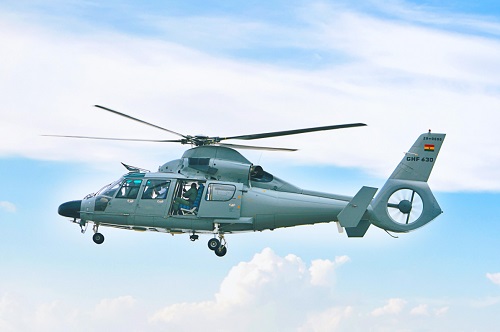On the morning of August 6, 2025, a Ghana Air Force Z-9 helicopter flying from Accra to Obuasi crashed in the Amansie Central District of the Ashanti
On the morning of August 6, 2025, a Ghana Air Force Z-9 helicopter flying from Accra to Obuasi crashed in the Amansie Central District of the Ashanti Region, killing all eight people on board, including three crew members and five passengers, among them the Minister of Defense and his entourage.
Flight and Weather Conditions
The helicopter, one of the Air Force’s serviceable aircraft used for medical evacuations and cargo transport, delayed its departure from Accra due to poor weather in southern Ghana. It eventually took off at 9:12 a.m., under misty conditions with visibility between 5–7 km and low clouds starting at about 700 feet above ground.
The crew initially navigated under Visual Flight Rules (VFR), adjusting altitude to avoid low clouds and limited visibility. As they approached Obuasi, the weather worsened, with fog, light rain, and visibility dropping to around 200 metres in some areas—dangerously low for visual navigation. The terrain in the region, with hilly and rugged features, created turbulent wind currents and downdrafts.
Transition to Instrument Flight
Around 9:56 a.m., the helicopter entered Instrument Meteorological Conditions (IMC), forcing the pilots to rely entirely on cockpit instruments. Cockpit recordings indicated that the crew believed they had cleared high ground moments before the aircraft suddenly lost altitude and crashed 6.5 miles from Obuasi at approximately 9:58 a.m.
Crash and Emergency Response
Emergency teams reached the site about two hours later, navigating steep slopes, heavy rain, and slippery conditions. The impact destroyed the helicopter completely, leaving no survivors.
Aircraft Condition
The Z-9 helicopter was airworthy, having been manufactured in 2012 and delivered to the Ghana Air Force in 2015. It had reached its ten-year service mark in May 2025, but the manufacturer approved a 90-day extension valid until August 18, 2025. The aircraft had undergone a mandatory 100-hour maintenance inspection prior to the flight, signed off as serviceable by engineers and the captain. Flight recorders confirmed all major systems were functioning normally.
However, the helicopter lacked advanced safety systems, such as a Terrain Awareness and Warning System, advanced autopilot, and enhanced terrain-mapping tools, which could have aided the pilots in poor weather.
Crew Competence
Both pilots were highly trained, competent, and medically fit. The captain held a green instrument rating, the highest in the Ghana Air Force, and the co-pilot had FAA commercial and instrument-rated certification. Records showed no fatigue, illness, or medication issues.
Cause of the Crash
Investigators found no evidence of engine failure, fuel issues, or maintenance lapses. Data analysis revealed that the crash was caused by a sudden loss of altitude and lift due to strong downdrafts over the mountainous terrain near Obuasi.
A downdraft is a rapidly descending column of air, often occurring in rugged terrain where warm, moist air collides with cooler air layers. The helicopter lost altitude despite normal engine power and control inputs, confirming that environmental factors rather than mechanical failure or human error caused the accident.
Conclusion
The investigation concluded that the Z-9 helicopter crash was directly caused by sudden altitude loss from downdrafts in unstable atmospheric conditions over the Dampia Forest Reserve.
Disclaimer: This summary is based entirely on the official investigative report of the Z-9 helicopter crash.
